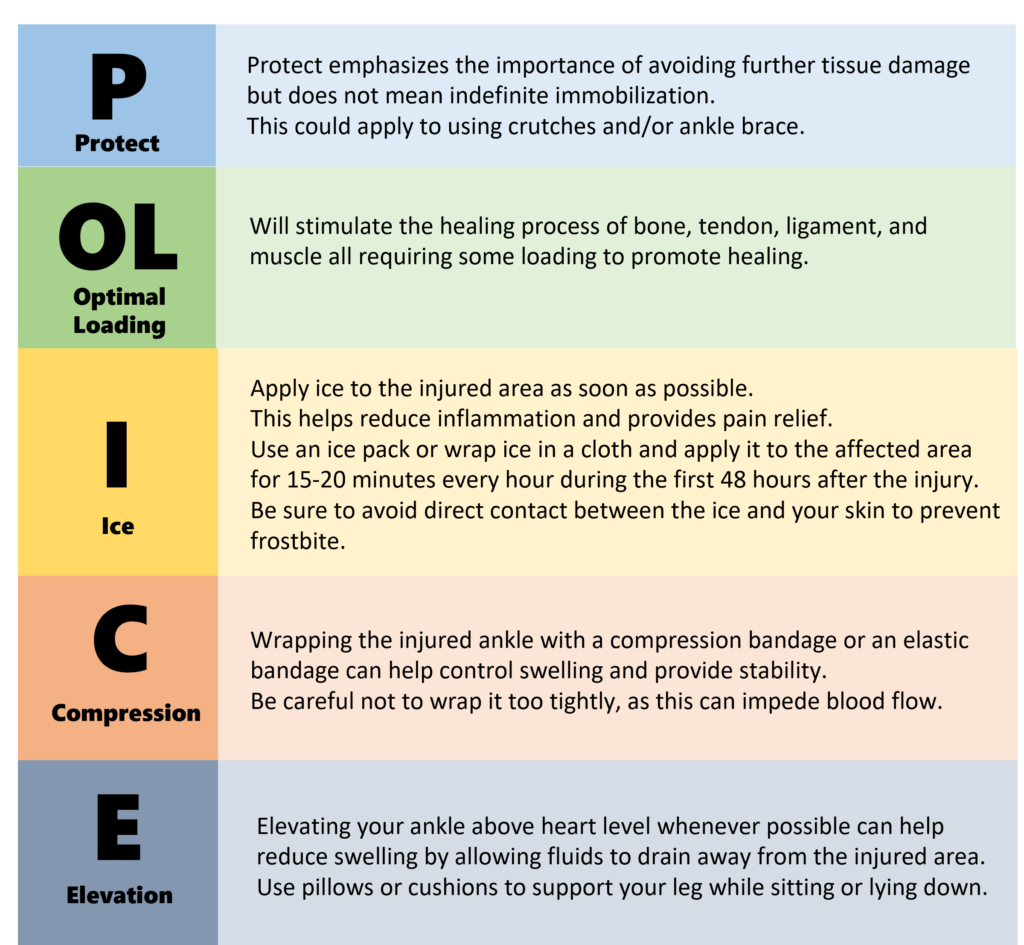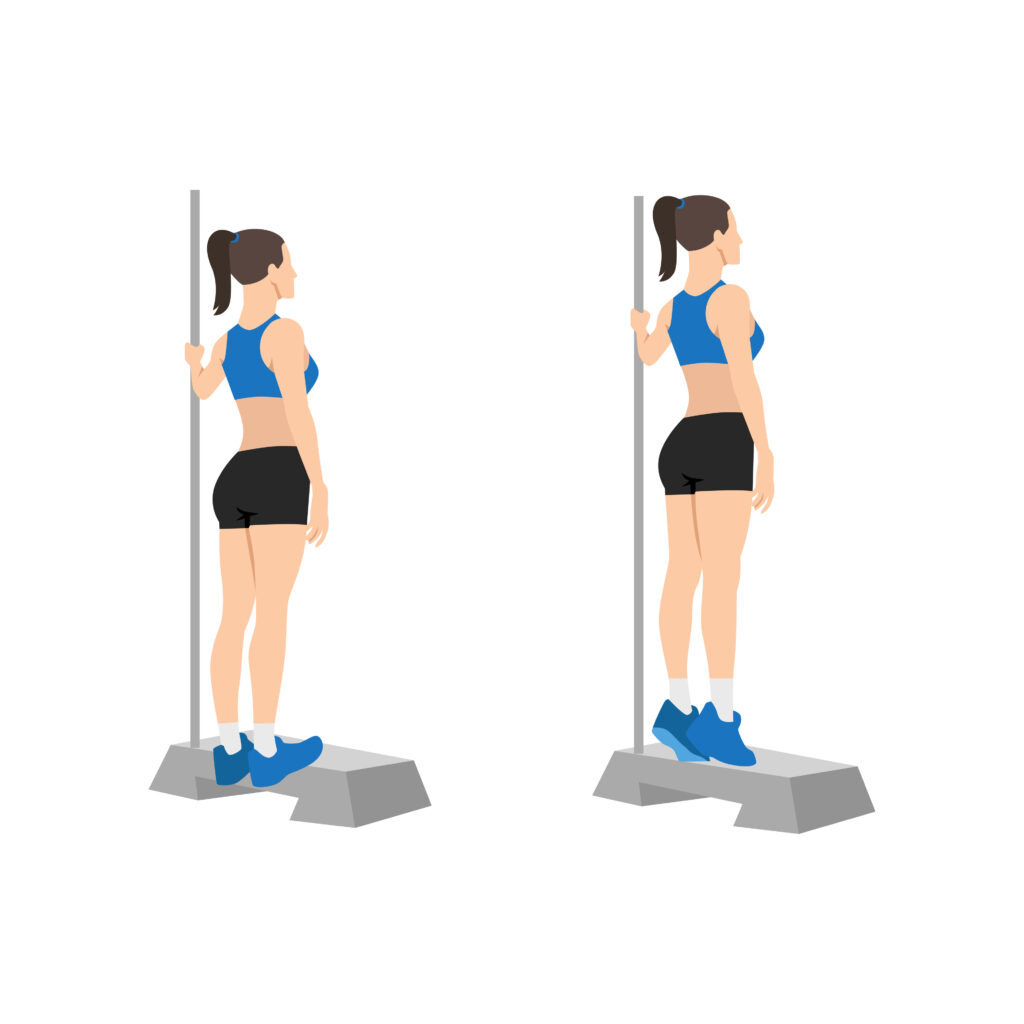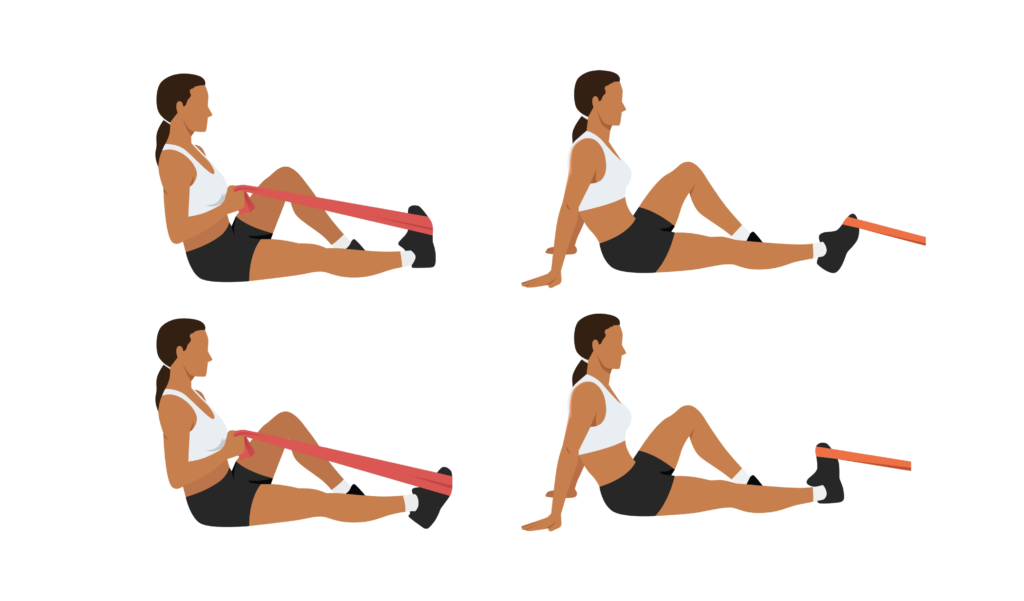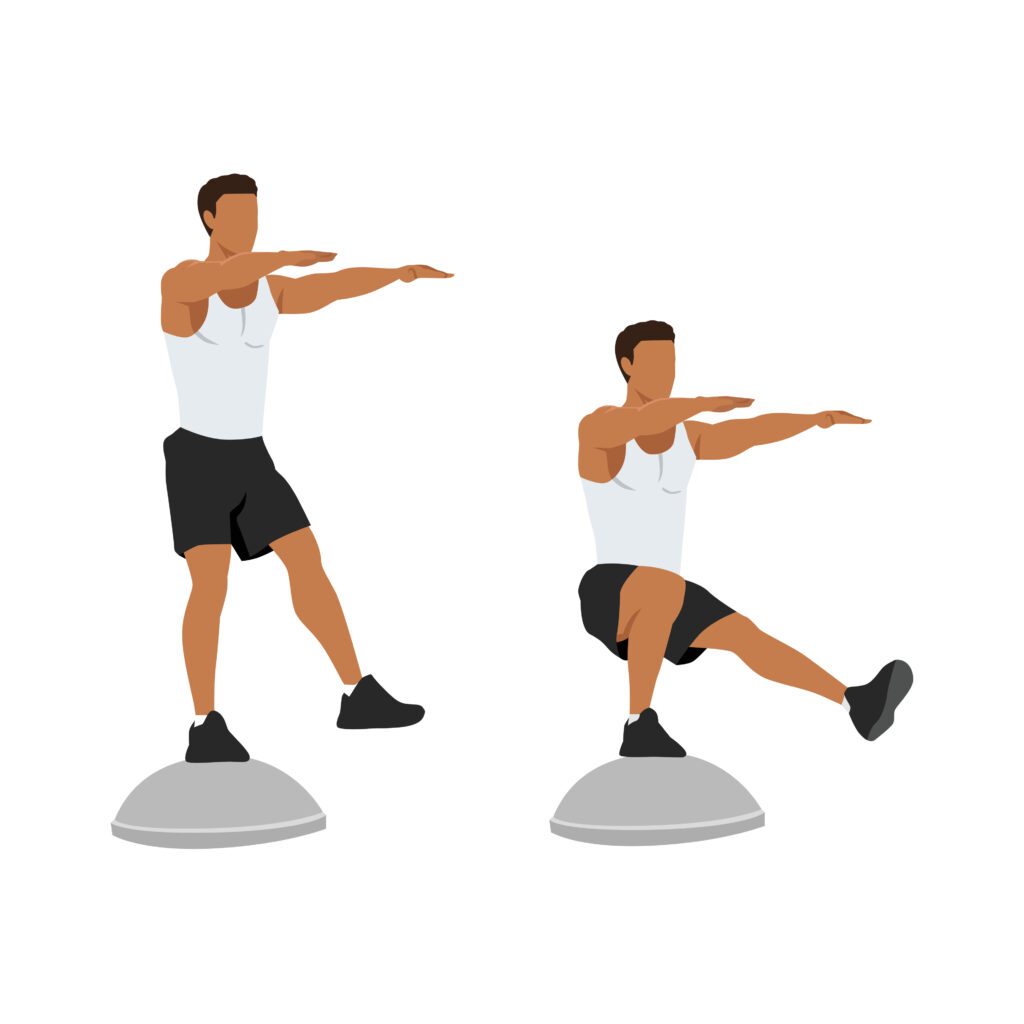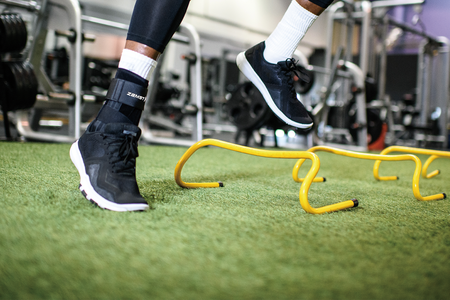Speed Up Your Recovery: Home Treatment for Ankle Sprains
Ankle sprains are one of the most common injuries, affecting people of all ages and activity levels. Whether you’re an athlete, a fitness enthusiast, or just someone who took a misstep, an ankle sprain can be painful and inconvenient.
However, the good news is that with the right care and attention, you can significantly speed up your recovery process from the comfort of your home.
Understanding Ankle Sprains
An ankle sprain occurs when the ligaments that support the ankle joint are stretched or torn, usually due to an abrupt twisting or rolling motion of the foot. Typically, the majority of ankle sprains are of the inversion type (turning the foot in) resulting in swelling and pain. The severity of an ankle sprain can vary from mild to severe, with corresponding levels of pain, swelling, and instability.
Grade I ankle sprain (mild) would be micro tearing of the ligaments.
Grade II ankle sprain (moderate) would be a partial tear of the ligaments.
Grade III ankle sprain (severe) would be a full tear of the ligaments.
The crucial component for recovering from an ankle sprain is what type of home treatment can help improve your recovery.
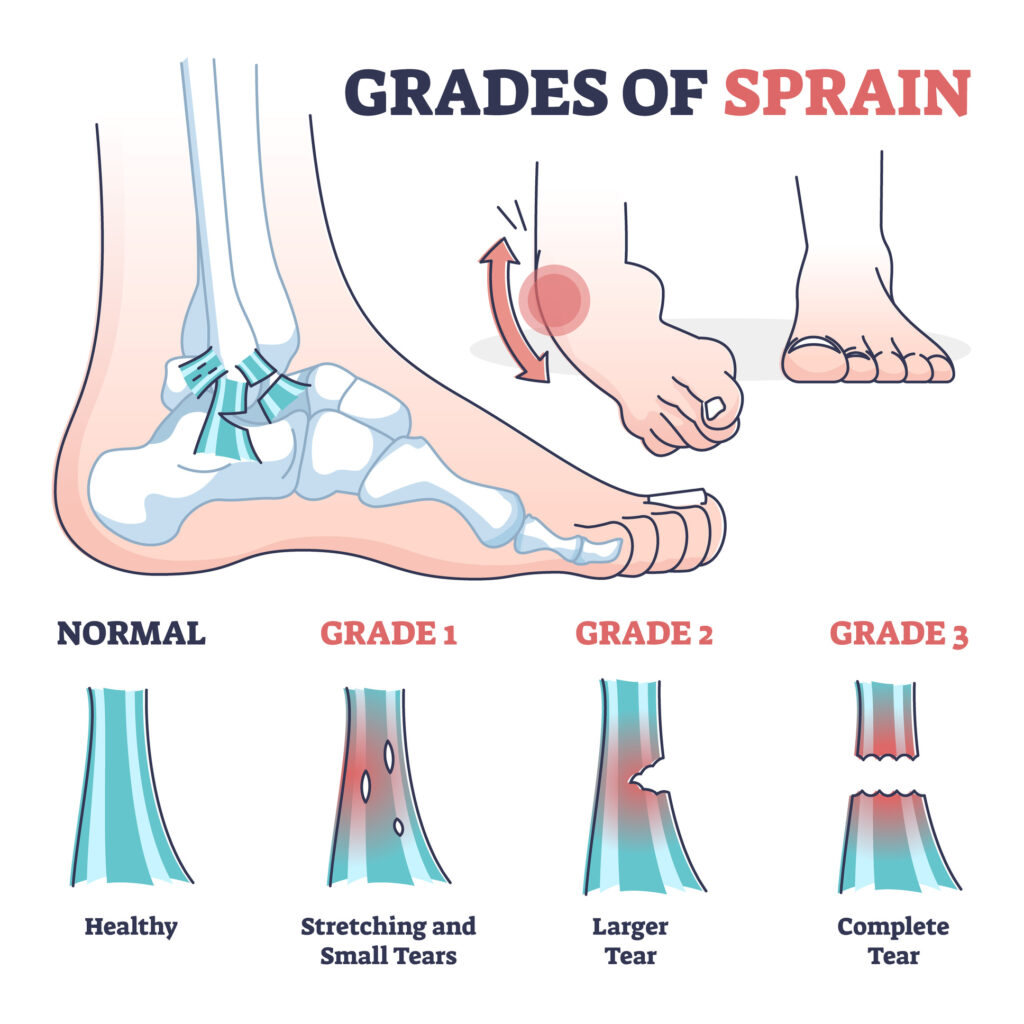
The P.O.L.I.C.E. Method
One of the most widely recommended methods for treating an ankle sprain at home is the R.I.C.E. method, which stands for Rest, Ice, Compression, and Elevation.
However, over the last couple of years a modern and modified first aid method of treating acute injuries has arrived. The P.O.L.I.C.E. Method which stands for protection, optimal loading, ice compression, and elevation. This provides a safe and effective loading strategy for acute injuries.
Pain Management
One of the most difficult things with managing ankle sprains is the amount of pain in the acute stages of rehab. When you sprain an ankle the body’s immediate response is to start swelling which will lead to pain. Being able to manage pain will play a big role in your ability to recovery in a timely manner from an ankle sprain. Here are some ways to reduce pain at home:
Over-the-Counter Pain Relievers: Non-prescription pain relievers like ibuprofen or acetaminophen can help reduce pain and inflammation. Be sure to follow the recommended dosage instructions.
Topical Pain Relief: You can also try using topical creams or gels that contain ingredients like menthol or capsaicin to provide localized pain relief.
P.O.L.I.C.E: Starting this method right away will help speed along the journey of recovery.
Strengthening and Mobility Exercises
As your ankle begins to heal, it’s important to gradually introduce exercises that can help strengthen the muscles and improve mobility. However, it’s crucial to consult with a healthcare provider or physical therapist before starting any exercises to ensure they are appropriate for your specific injury and stage of recovery.
Here are some general exercises that are often recommended:
- Toe Taps: While seated or lying down, gently tap your toes up and down to improve circulation and maintain flexibility.
- Ankle Alphabet: Write the alphabet in the air with your big toe to promote ankle mobility.
- Calf Raises: Once your ankle can bear weight, perform calf raises by slowly lifting your heel off the ground while keeping your toes on the floor. This exercise strengthens the calf muscles and improves balance.
- Resistance Band Exercises: Using a resistance band, perform exercises that target ankle and calf strength.These may include dorsiflexion and plantarflexion exercises.
- Balance Exercises: Balance exercises on one leg can help improve ankle stability.
Start with simple balances and progress to more challenging exercises as you gain strength and confidence.
Nutrition and Hydration and Mental Well-Being
Proper nutrition plays a vital role in the healing process. Ensure that you maintain a balanced diet rich in essential nutrients like vitamin C, which supports collagen production, and calcium, which aids in bone health.
Staying hydrated is equally important, as it helps flush out toxins and supports tissue repair.
Recovery from an ankle sprain can be frustrating, especially if you’re used to an active lifestyle. It’s essential to take care of your mental well-being during this time.
Stay positive, and don’t hesitate to reach out to friends and family for support. Engaging in activities that you enjoy and are capable of doing while recovering can also help boost your mood.
When to Seek Professional Help
While home treatment can be highly effective for mild to moderate ankle sprains, it’s crucial to know when to seek professional medical help. Consult a healthcare provider if you experience:
- Severe pain that doesn’t improve with home care.
- Significant swelling that doesn’t subside.
- Numbness or tingling in the injured foot.
- An inability to bear weight on the injured ankle.
- Persistent instability or weakness in the ankle.
- Redness/glossiness of calf area that is severely painful
Recovering from an ankle sprain at home is entirely possible with the right care and attention. However, full recovery for return to sport or performance should always be run by a healthcare provider such as a Physical Therapist.
The P.O.L.I.C.E method, pain management strategies, strengthening exercises, and good nutrition can all contribute to a faster and more successful recovery. Remember, patience is key, and it’s essential to consult with a healthcare provider if you have any doubts or concerns about your recovery process. With dedication and the right approach, you’ll be back on your feet in no time.
ABOUT THE AUTHOR
EVAN JEFFRIES is a physical therapist with a Doctorate in Physical Therapy (DPT) from the University of St. Augustine for Health Sciences. He is also the owner of Evolving Motion and has vast knowledge of the musculoskeletal system and has treated many orthopedic conditions by bringing a proactive approach to healthcare and lifestyle. Recently he has also been active on social media as an injury analyst mainly in related to injuries NBA players have sustained. Evan can be followed on his social media accounts.
